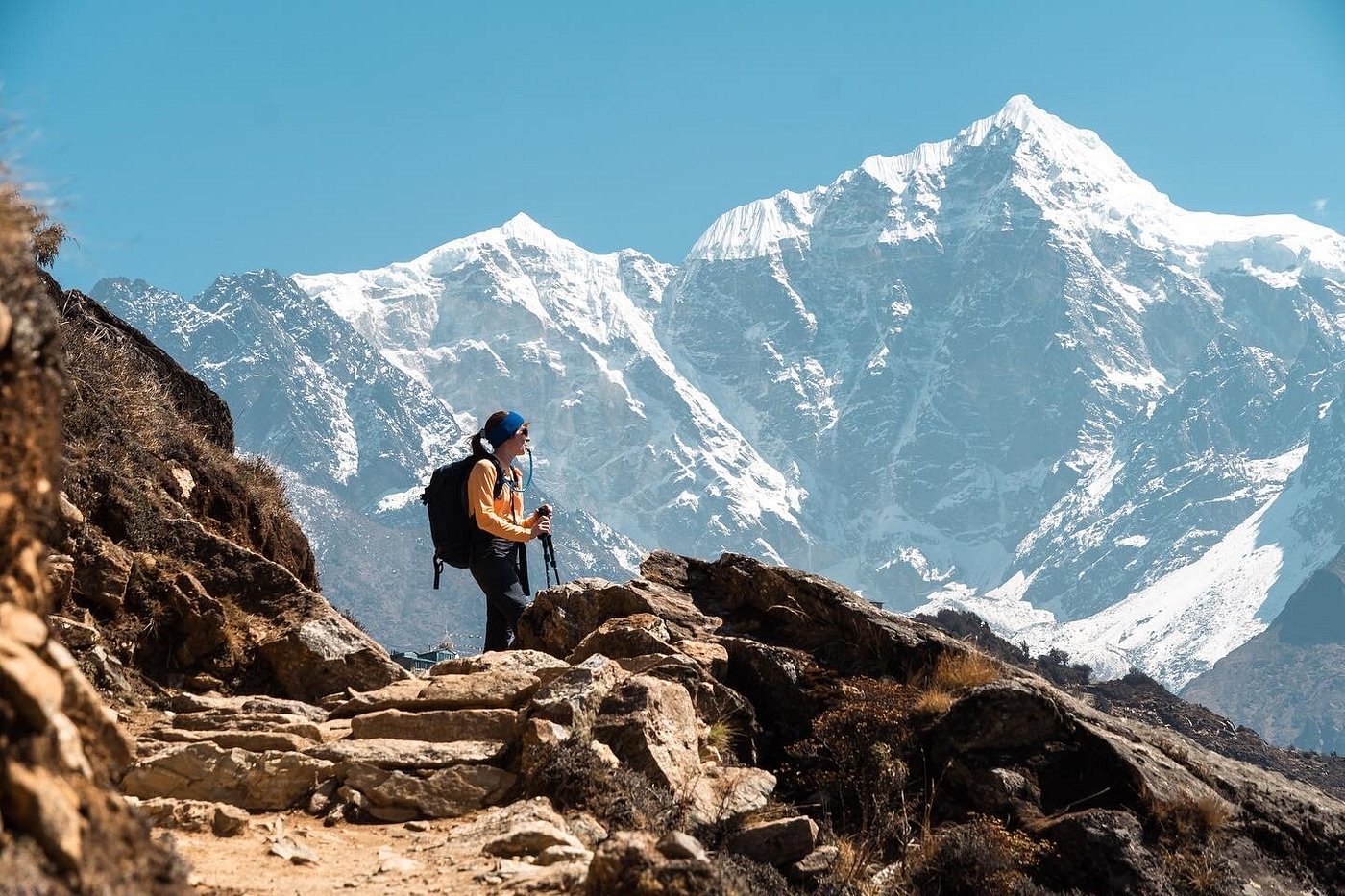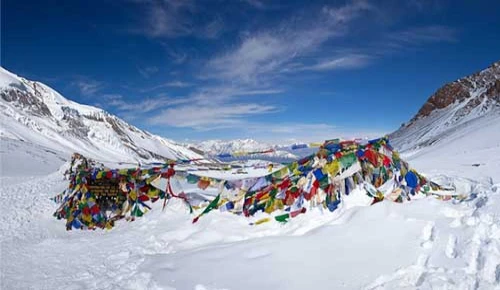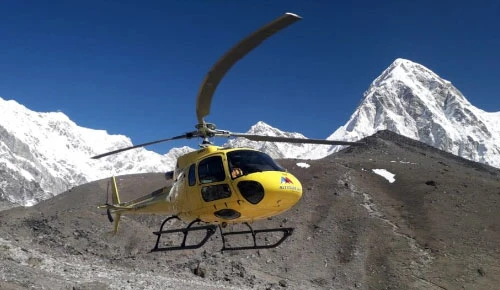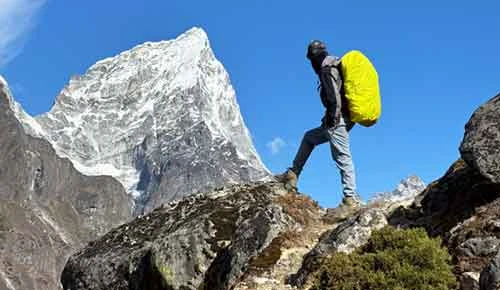How to Get to Everest Base Camp: A Comprehensive Guide
Nestled amidst the towering peaks of the Himalayas, Everest Base Camp beckons adventure enthusiasts from around the globe. The journey to this iconic destination is as thrilling as the destination itself. In this guide, we'll not only explore the trekking route but also delve into various transportation options to help you reach Everest Base Camp.
Before we jump in to main topic lets learn about the distance from Kathmandu to Lukla. The direct distance from Kathmandu, the capital city of Nepal, to Everest Base Camp is approximately 138 kilometers (86 miles) in a straight line.
However, the trekking distance from Lukla (the nearest airport to Everest Base Camp) to Everest Base Camp itself is around 65 kilometers (40.4 miles) one way. Please note that this distance can vary slightly depending on the specific route taken and any side trips made during the trek. The trekking journey typically takes several days, allowing trekkers to acclimatize to the high altitude and enjoy the stunning Himalayan landscapes along the way.
Table of Contents
Choosing Trekking Routes
When it comes to trekking to Everest Base Camp, there are primarily two popular routes:
A. Lukla Route

The most common route starts with a scenic flight from Kathmandu to Lukla. From Lukla, trekkers traverse through picturesque Sherpa villages, lush forests, and suspension bridges, gradually ascending to Everest Base Camp. Or in case of No Lukla flight, the flight redirects via Drive form Kathmandu to Manthali and Manthali to Lukla Flight.
B. Jiri Route
A longer and less crowded alternative, the Jiri route involves a bus journey from Kathmandu to Jiri, followed by a trek through the lower Solu region. This route offers a more gradual acclimatization process.
Alternative Transport Options
- Helicopter Tour: For those seeking a more luxurious and time-efficient option, a helicopter tour to Everest Base Camp is the way to go. Helicopter tours provide a bird's-eye view of the Himalayas, allowing you to witness the grandeur of Everest and nearby peaks in a matter of hours.
- Heli-Trekking: Combining the thrill of helicopter travel with the adventure of trekking, heli-trekking to Everest Base Camp involves trekking to certain points and then taking a helicopter for the remaining journey. This option offers a balance between trekking and aerial views of the Himalayas.
- Expedition Base Camp: If you're an experienced mountaineer joining an Everest expedition, the base camp can be reached by joining a climbing expedition. Expedition teams typically arrange transportation and logistics for their members, including helicopter flights to the base camp.
- Private Jeep/Car: For those who prefer a road trip experience, you can hire private jeep or car Jiri or Salleri. From these points, trekkers can start their trek, enjoying the scenic drive through picturesque landscapes.
Considerations for Choosing Transportation:
- Time: Helicopter flight or regular flights to Lukla are the quickest options, perfect for travelers with limited time.
- Budget: Helicopter tours are relatively expensive, while trekking and using public transportation options are more budget-friendly.
- Adventure Level: Trekking offers a rich cultural and physical adventure, while helicopter tours provide a comfortable aerial perspective of the region.
- Physical Condition: Consider your health and physical condition when choosing between trekking and alternative transportation methods.

Obtaining Permits
Nepal requires trekkers to obtain permits for the Everest Base Camp trek. The two necessary permits are the Sagarmatha National Park Permit and the TIMS (Trekkers' Information Management System) Card. These permits are typically arranged through your trekking agency or the Nepal Tourism Board.
Planning Your Itinerary
Carefully plan your trekking itinerary, considering acclimatization days to adapt to the high altitude. A well-structured itinerary ensures a safer and more enjoyable trekking experience. Here's the outline Itinerary of Everest Base Camp Trek 14 Days:
- Day 1: Arrival in Kathmandu (1,400 m) Upon your arrival at Tribhuvan International Airport in Kathmandu, you'll be transferred to your hotel for a relaxing overnight stay.
- Day 2: Kathmandu to Lukla, then Trek to Phakding (2,610 m) Take a scenic 35-minute flight to Lukla (2,840 m) from Kathmandu. Alternatively, drive to Manthali/Ramechhap (474 m) in 5-6 hours and catch a 20-minute flight to Lukla. From Lukla, embark on a 3-4 hour trek to Phakding, where you'll spend the night.
- Day 3: Trek to Namche Bazaar (3,440 m) Embark on a 5-6 hour trek from Phakding to reach Namche Bazaar, a bustling Sherpa town situated at 3,440 meters. Enjoy your overnight stay at a guesthouse.
- Day 4: Acclimatization Day in Namche Bazaar Spend a day acclimatizing in Namche Bazaar. Take a scenic 4-5 hour hike to Hotel Everest View (3,880 m) and back. Rest and prepare for the upcoming trekking days.
- Day 5: Trek to Tengboche (3,860 m) Embark on a 5-6 hour trek to Tengboche, located at an altitude of 3,860 meters. Experience the serene ambiance of the Tengboche Monastery and rest for the night at a guesthouse.
- Day 6: Trek to Dingboche (4,410 m) Continue your trek with a 5-6 hour journey to Dingboche, situated at 4,410 meters. Enjoy the breathtaking mountain views and spend the night at a guesthouse.
- Day 7: Acclimatization Day at Dingboche Take an acclimatization day in Dingboche. Embark on a 4-5 hour hike to Nangkartsang Peak (5,083 m) and return. Rest and acclimate for the challenging trek ahead.
- Day 8: Trek to Lobuche (4,910 m) Trek for 5-6 hours to reach Lobuche at an altitude of 4,910 meters. Prepare for the next day's journey to Everest Base Camp. Overnight at a guesthouse.
- Day 9: Trek to Everest Base Camp (5,364 m), then to Gorak Shep (5,164 m) Embark on an 8-9 hour trek to Everest Base Camp (5,364 m) and then descend to Gorak Shep (5,164 m). Witness the iconic Everest Base Camp and spend the night at a guesthouse.
- Day 10: Hike to Kala Patthar (5,555 m), Descend to Pheriche (4,240 m) Begin your day with an early morning hike to Kala Patthar (5,555 m) for breathtaking sunrise views. Descend to Pheriche (4,240 m) in 7-8 hours and rest at a guesthouse.
- Day 11: Trek to Namche Bazaar (3,440 m) Trek back to Namche Bazaar in 6-7 hours. Enjoy the familiar surroundings and spend the night at a guesthouse.
- Day 12: Trek to Lukla (2,840 m) Complete your trek with a 6-7 hour journey back to Lukla. Reflect on your remarkable journey and overnight at a guesthouse.
- Day 13: Return to Kathmandu Fly back to Kathmandu in a 35-minute flight or take a 20-minute flight from Lukla to Manthali/Ramechhap and then drive to Kathmandu in 5-6 hours. Enjoy a comfortable night at your hotel.
- Day 14: Departure Bid farewell to Nepal as you're transferred to the International Airport for your final departure, taking with you cherished memories of your Everest Base Camp adventure.
Packing Wisely
Pack light but efficiently. Include essentials like warm clothing, sturdy trekking boots, a good quality backpack, water purification tablets, and a first aid kit. Don't forget to pack layers to accommodate changing weather conditions during the trek.
Hiring a Guide and Porter
While some trekkers prefer going solo, hiring a local guide and porter can enhance your experience. Guides are well-versed with the terrain and can provide valuable insights, while porters can ease the burden of carrying your backpack.

Training and Physical Preparation
Prepare your body for the physical demands of the trek. Engage in cardiovascular exercises, strength training, and endurance activities to build stamina and reduce the risk of altitude sickness.
Acclimatization and Hydration
Listen to your body and acclimatize properly. Stay hydrated, avoid alcohol, and ascend slowly to allow your body to adjust to the high altitude. Acclimatization days are strategically planned within the itinerary to aid this process.
Respecting Local Culture
Respect the local culture and customs of the Sherpa people. Learn a few basic Nepali phrases, understand the traditional practices, and be mindful of your behavior to foster positive interactions with the local communities.
Conclusion
Embarking on the Everest Base Camp trek is an exhilarating adventure, but adequate preparation and knowledge are paramount for a successful journey. By following these essential tips, you'll not only reach Everest Base Camp but also create enduring memories of an awe-inspiring trekking experience in the heart of the Himalayas.
No matter which mode of transportation you choose, the journey to Everest Base Camp promises unparalleled vistas and a sense of accomplishment. Whether you opt for the classic trek from Lukla, a thrilling helicopter ride, or a combination of both, the awe-inspiring beauty of the Himalayas awaits you at Everest Base Camp. Safe travels and may your Everest adventure be as remarkable as the destination itself!








